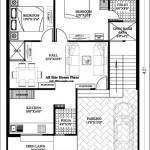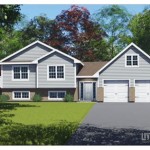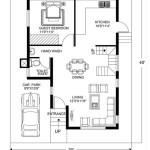Historic Plantation Home Floor Plans: A Window into the Past
Historic plantation homes represent a significant chapter in American history, bearing witness to the era of slavery and the complex social fabric that shaped the nation. Beyond their architectural significance, these homes, often sprawling and elegant, offer a glimpse into the lives of the people who inhabited them, both enslaved and free. Floor plans, in particular, serve as blueprints for understanding the layout, function, and social dynamics of these historical structures.
The floor plans of plantation homes are not just static designs; they tell a story. They reveal the power dynamics of the time, the division of labor, and the intricate relationships that existed between the planter class, their families, and the enslaved workforce. By examining these floor plans, we gain a deeper understanding of the social and economic systems that defined life on a plantation.
Key Features of Plantation Home Floor Plans
The typical plantation home floor plan often reflects a specific architectural style, reflecting the wealth and status of the planter family. Common features include:
- Grand Entrance Hall: This central space provided a formal entryway and served as a gathering point for the family and guests. It often displayed furniture, portraits, and other decorative elements that showcased the family's wealth and status.
- Formal Parlor: This room was typically used for entertaining guests and showcasing fine furniture and artwork. It represented the family's social standing and cultural sophistication.
- Dining Room: This room was designed for large gatherings and formal meals. It served as a focal point for social interactions and often reflected the family's culinary traditions.
- Bedrooms: The number and size of bedrooms varied based on the family's size and wealth. They often included master bedrooms, children's rooms, and guest rooms.
- Separate Quarters: Planters often had separate quarters for enslaved workers, which were typically located away from the main house and often lacked the comforts and spaces found in the main residence. These quarters varied in size and condition, reflecting the harsh realities of slavery and the hierarchy that existed on the plantation.
Variations in Plantation Home Floor Plans
While there were common elements in plantation home floor plans, significant variations existed depending on factors such as:
- Region: Planation homes in the Southern United States often exhibited distinct regional styles, reflecting the architectural heritage of the area. For instance, the antebellum homes of the Deep South often featured columns and verandahs, while plantation homes in the Upper South might have more modest designs.
- Timeline: Floor plans evolved over time, reflecting changing architectural trends and the evolving economic and social landscape of the plantation system. For example, early plantation homes might have been more compact and functional, while later homes could be more elaborate and spacious.
- Wealth and Status: The planter class, like any social group, had varying levels of wealth and status. This disparity was often reflected in the size, complexity, and amenities of their plantations and homes. Planters with greater wealth might have larger homes with more elaborate features.
Interpreting Plantation Home Floor Plans
The floor plans of historic plantation homes provide a valuable lens for understanding the past. They offer insights into the daily routines, social hierarchies, and material culture of the time. By analyzing the layout, spaces, and features of these plans, researchers and historians gain a deeper appreciation for the complex lives that unfolded within these walls.
Beyond their architectural significance, plantation homes offer a poignant reminder of the history of slavery in the United States. They underscore the inequalities that existed and the resilience of those who endured oppression. The floor plans, while reflecting the elegance and grandeur of some aspects of plantation life, also serve as a testament to the harsh realities of the enslaved experience.
Studying historic plantation home floor plans can contribute to a more nuanced understanding of the past. They provide insights into the social, economic, and architectural landscape of a bygone era and serve as a valuable resource for research, education, and preservation efforts.

Plantation Southern Style House Plans

Architectural Home Plans Prestwould Virginia Plantation Mansion W Co Historic American Homes

5 Bedrm 7433 Sq Ft Southern Plantation House Plan 153 1187

Plantation House Plans Find Your

Mansion Floor Plan Plantation House Plans

Floor Plans Evergreen Plantation Wallace St John The Baptist Parish Louisiana

Floor Plan Of Sotterley Plantation House St Mary S College Maryland Digital

Plantation Southern Style House Plans

Floor Plans Evergreen Plantation Wallace St John The Baptist Parish Louisiana

Pin On Houses








